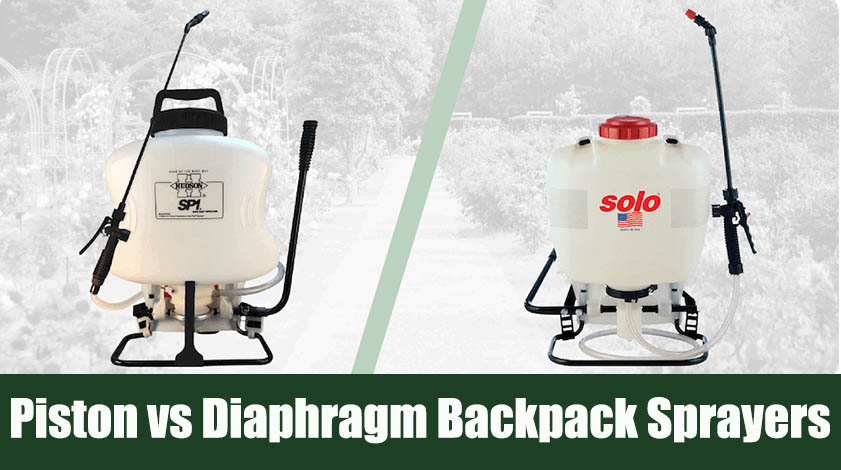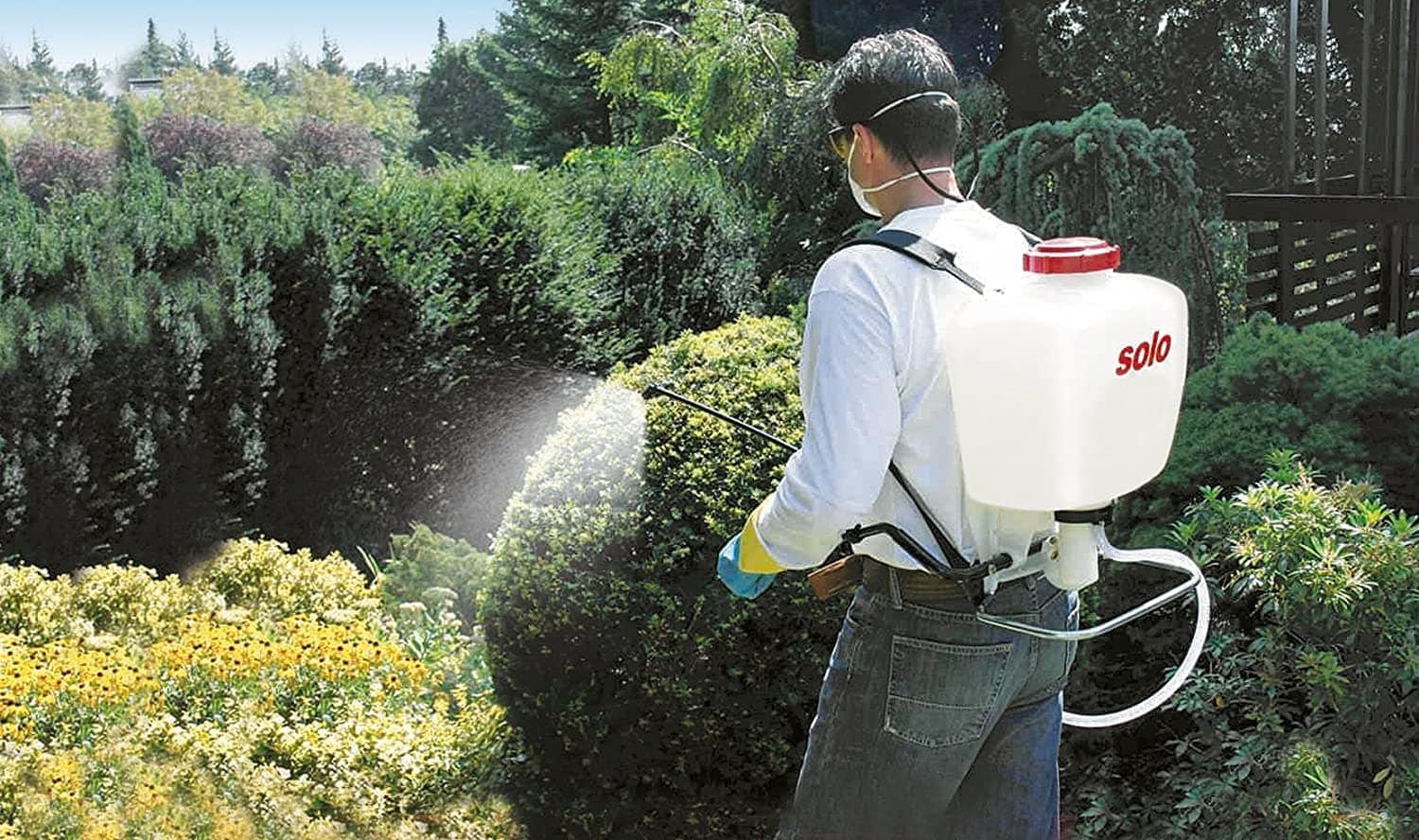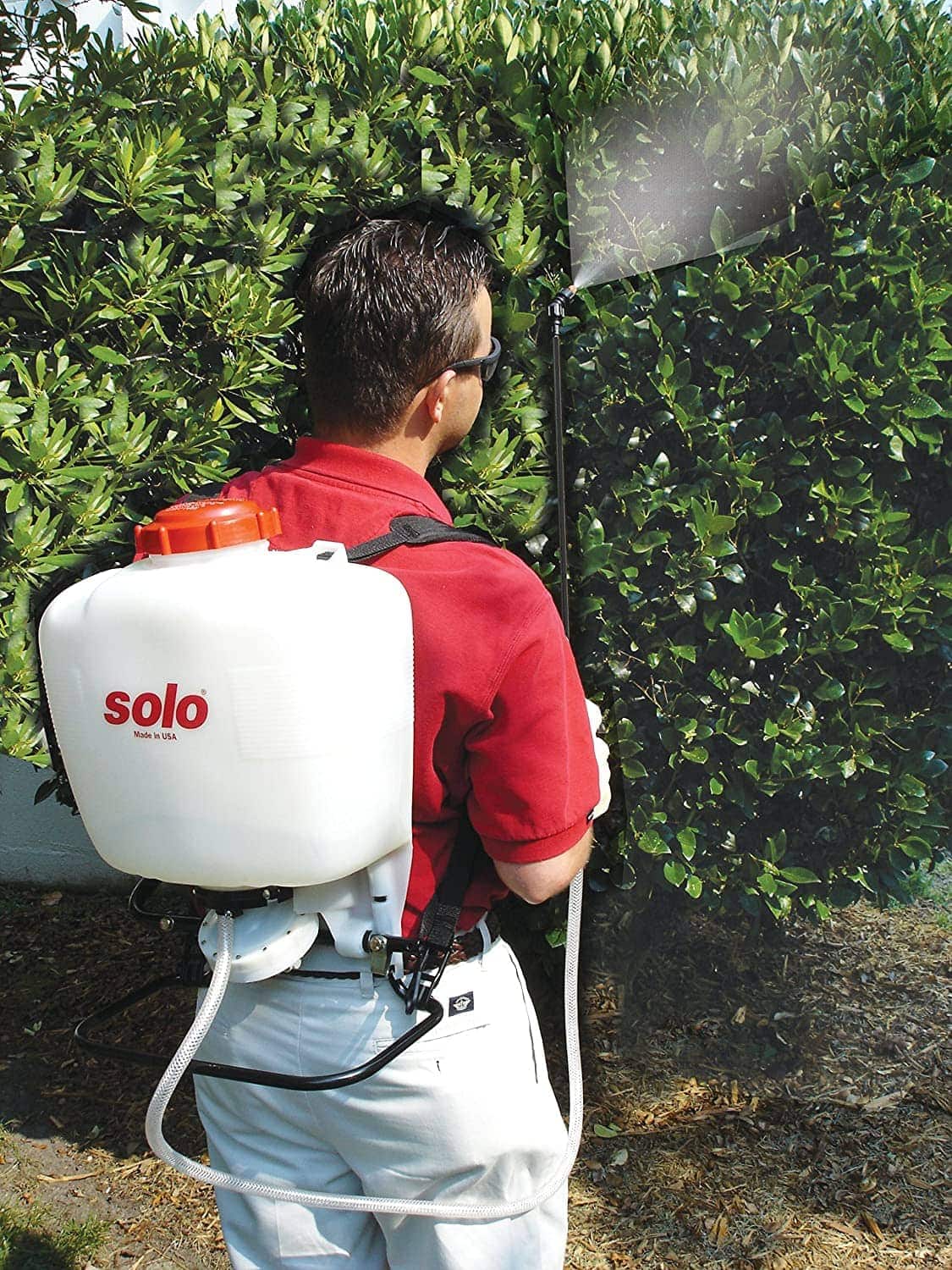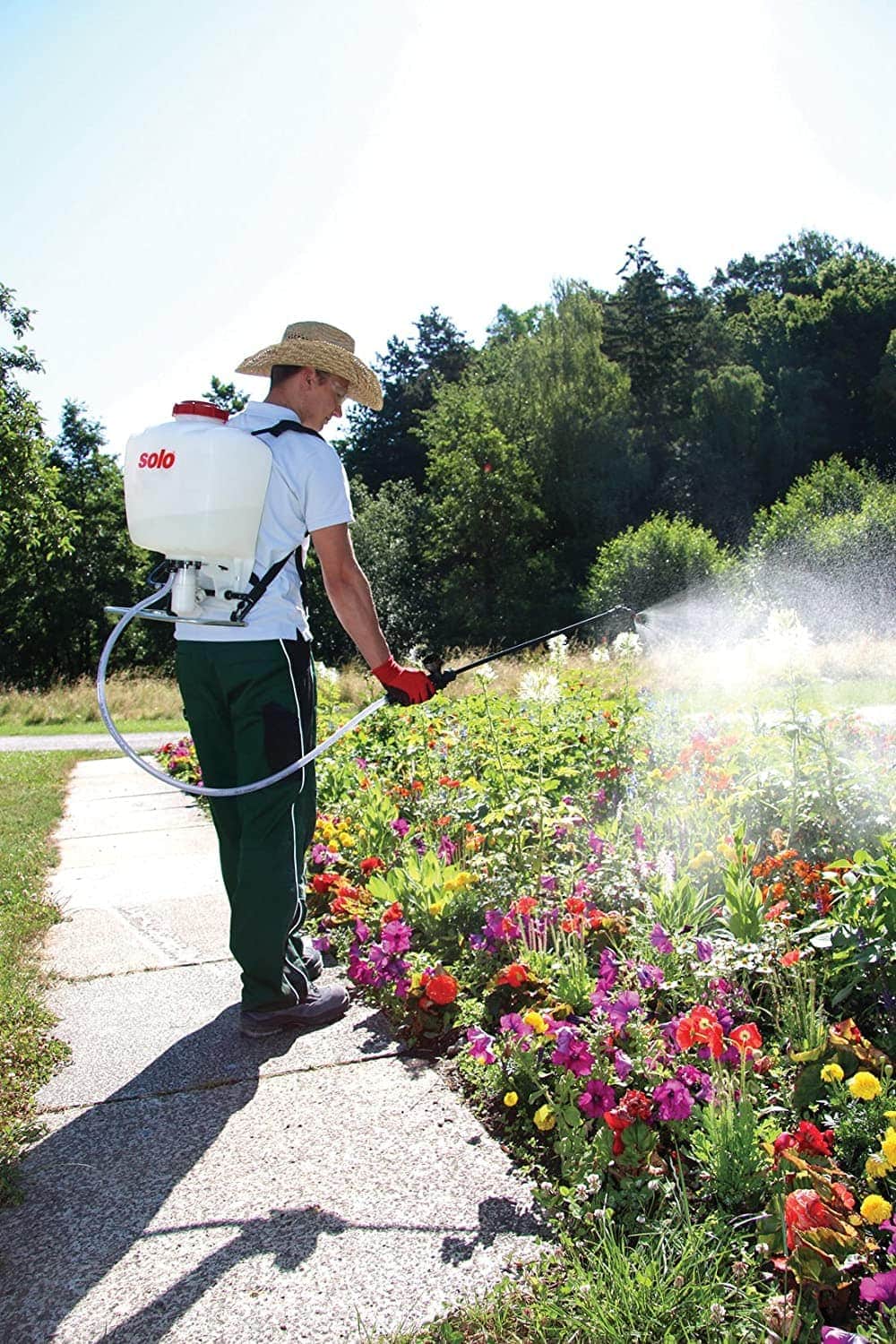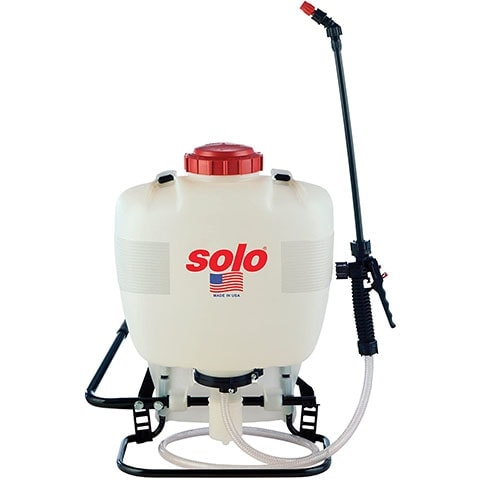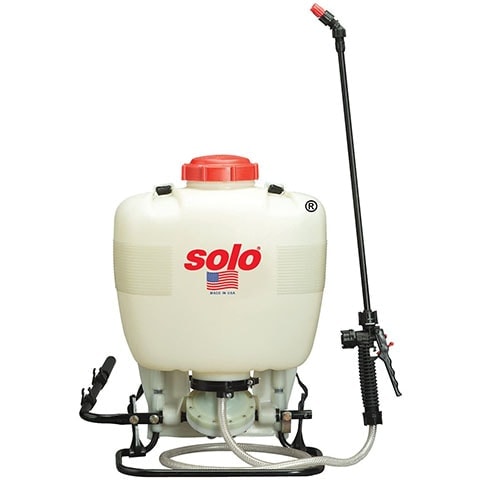Piston vs Diaphragm Backpack Sprayers: What’s the Difference?
-
Pete Ortiz
- Last updated:

If you are on the market for a backpack sprayer, you probably figured out pretty quickly that there are various backpack sprayers to choose from. This can make the process of selecting a model stressful and overwhelming.
Most gardeners and landscapers prefer the piston backpack sprayer or the diaphragm backpack sprayer. Both options are effective and functional, but they do not offer the same results.
With that in mind, you are probably wondering which one you should get. Since both options are impressive, the answer to this question depends on your intended use. To find out what we mean by this, read on.
What’s the Difference?
Both backpack sprayers serve the same function and have similar backpack designs. How they differ is the type of pump within the backpack sprayer. In fact, their names refer to the pump used inside. For example, the piston backpack sprayer uses a piston pump, while the diaphragm backpack sprayer uses a diaphragm pump.
Each pump comes with its own benefits and drawbacks, meaning that you should select the backpack that best matches your intended use.
Let’s dig right into what each pump offers to help you select the best backpack sprayer for your needs.
Overview of Piston Backpack Sprayers
The piston backpack sprayer uses a piston pump, which allows it to offer a lot of pressure for your sprays. It’s also easy to repair and generally more affordable, although it is less chemically resistant than the diaphragm. Most backpack sprayer users prefer the piston pump, making this backpack sprayer the most popular between the two.
Design
Both the piston and diaphragm backpack sprayers include a backpack design. This makes it easier and more convenient to spray around your yard or home. What makes the piston different from the diaphragm is the pump used within the backpack.
The piston backpack sprayer uses a piston pump to create pressure. The inside of the backpack includes a cylinder housing. When pumping, a piston moves up and down, which creates the pressure for the spray to spray out the liquid.
Pressure
The piston pump creates more pressure than the diaphragm pump. More specifically, a piston pump can generate a maximum pressure of 6 bar. What this means is that the sprayer can produce smaller droplets and reach further distances. This makes the piston backpack sprayer better for shrubs or trees, which require greater distance reaching abilities.
Chemical Resistance
Though the piston pump can pack a lot of force for your sprayer, it is not as suitable for highly corrosive, gritty, or syrupy liquids. It is not completely closed, making it dangerous if you are using these types of chemicals.
Maintenance and Repair
The piston pump is easier to repair than the diaphragm pump because you only need to remove a couple of screws for maintenance. On the other hand, the diaphragm pump is a closed system, making it more difficult to repair.
Best For
Due to the piston pump’s nature, you should use a piston backpack sprayer for low abrasive and low viscosity spray liquids like herbicides and insecticides. You will especially want to use the piston sprayer to spray these liquids on trees, shrubs, or any other area that requires a larger reach.
On the other hand, you might want to opt for a different sprayer for close-up places or general weed killing. Because of the small droplet size, it is easy for these droplets to miss the target and get blown off course by the wind.
Price
The design and popularity of the piston pump make it relatively affordable. Most people on a budget opt for the piston backpack sprayer for this reason.
- Affordable
- Reaches far distances
- Provides pressure of 6 bar
- Easy to repair
- Not suitable for corrosive chemicals
- Less control over liquid droplets
Overview of Diaphragm Backpack Sprayers:
Unlike the piston sprayer, the diaphragm backpack sprayer uses a diaphragm pump to create the pressure necessary to spray liquids. These pumps are highly durable and suitable for corrosive chemicals. Although they take a bit more time to use than the piston backpack sprayer, they are a great choice to deal with more dangerous chemicals.
Design
Once again, the diaphragm backpack sprayer uses a backpack design. This makes the sprayer easy to carry around and use for extended amounts of time.
Inside the backpack is a diaphragm pump. This pump includes a flat diaphragm inside the housing. It is held together by 12 screws. When you’re pumping, the diaphragm flexes up and down to create pressure for the liquid. The diaphragm pump, as you probably assumed from the name, works like the human diaphragm.
Pressure
The diaphragm pump can only create pressure of up to 60 PSI or 4 bars. This is less power than the piston pump, but it is still suitable for a lot of spraying needs, especially if you are up close. This pressure will create larger liquid droplets that are more difficult to get off course. This liquid droplet size is ideal for up-close work, more controlled spraying, and general weed killing.
Chemical Resistance
The diaphragm pump is a closed system. What this means is that there is no contact with the cylinder wall. Due to this design, the diaphragm sprayer has a much higher chemical resistance than the piston sprayer. Corrosive chemicals, wettable powders, or bleach solutions can all be used within the diaphragm sprayer for this reason.
Maintenance and Repair
While the piston pump only has 2 screws, the diaphragm sprayer tends to have 12, making it more difficult to repair or maintain in the case of a break. Its closed system design is more difficult and time-consuming to get into the pump itself. It also will require more technical expertise to fix it correctly. It is repairable, it’s just more difficult to do so than the piston.
Best For
Because of the diaphragm pump’s low pressure and chemical resistance, you should use this backpack sprayer for closer up areas that need a more abrasive or corrosive mixture. The lower pressure will allow you to spray the corrosive chemical in a more controlled manner. At the same time, the pump itself will be able to handle the corrosive liquid without damaging the sprayer properly.
You should not use the diaphragm sprayer for greater distances. It simply does not provide enough pressure for spraying trees, shrubs, or other long-reaching areas.
Price
The diaphragm backpack sprayer is a bit more expensive than the piston backpack sprayer, though not by a lot. If you can afford a piston sprayer, you should be able to afford a diaphragm sprayer.
- High chemical resistance
- More control over liquid droplets
- More expensive
- More difficult to repair
- Not as far-reaching
 Which Tank is Better?
Which Tank is Better?
Neither tank is inherently better than the other. One tank is only better than the other in specific scenarios. What we mean by this is that there are certain instances where you should opt for the piston sprayer, while there are other instances where you should opt for the diaphragm sprayer, but there is no way to say which one is inherently better than the other.
If you are dealing with far-reaching areas with less corrosive chemicals, then the piston sprayer will be best for this situation. Its increased pressure will make it much easier to target exactly where you need it.
In contrast, you should select the diaphragm sprayer backpack if you are dealing with close-up areas and using highly corrosive chemicals. This sprayer will provide you with more control over the droplets and higher chemical resistance.
How to Choose Between a Piston Backpack Sprayer or Diaphragm Backpack Sprayer
You choose between a piston backpack sprayer and a diaphragm backpack sprayer based on your needs. As we have just said, select a piston sprayer for further-reaching distances or a diaphragm backpack sprayer for closer distances with corrosive chemicals.
| Situation | Piston | Diaphragm |
| Pressure | Up to 6 bar | Up to 4 bar |
| Handling | Easier to obtain higher-pressure | More difficult to obtain higher pressure |
| Spray liquid | Use low abrasive, low viscosity spray liquid | Use more abrasive or higher viscosity spray liquid |
| Resistance | More resistant mechanically | More chemically resistant |
| Reach and output volume | More reach with higher pressure | Lower reach with lower pressure |
Features to Consider When Buying a Backpack Sprayer
Not all backpack sprayers are made equally. Ensure that you invest in the right backpack sprayer by considering the factors below.
Tank Size
Make sure that your tank size is large enough that you can easily finish all of your projects without refilling the tank. A larger tank will also help reduce spillage whenever you’re adding in the chemicals. At the same time, do not get a tank that is so large that you are constantly carrying unnecessary weight. Try to find a happy medium.
Tank Materials
Since backpack sprayers are exposed to highly corrosive chemicals and materials, make sure the tank is heavy duty and durable. Look for tanks made of UV and corrosion-resistant materials. This will ensure that your sprayer lasts a long time and is safe to use.
Nozzles
Depending on the project, you will need different nozzles. Make sure your tank comes with interchangeable nozzles so you can spray according to every project.
Seals and Gaskets
Whenever you are using chemicals, you need to have seals and gaskets in place to enhance the life and performance of the sprayer and prevent leaks. Ensure that your tank comes with all the necessary seals and gaskets based on the chemicals you intend to use.
Comfort
Carrying a backpack with a lot of liquid inside can become uncomfortable fast. Make sure that your backpack sprayer is designed to fit comfortably on your body. Look for shoulder straps and carrying handles for ease of use and comfort. Also, look at frame size to make sure that it fits your body shape and stature.
Safety
Once again, spray backpacks house dangerous chemicals. Ensure that your backpack includes safety features like shutoff valves and lock-on/lock-off features to ensure that it is maximally safe.
Quick Look: Our Top Choices
Our Favorite Piston Backpack Sprayer: Solo 425 4-Gallon Professional Piston Backpack Sprayer
The Solo 425 Piston Backpack Sprayer includes a piston pump with a pressure range of up to 90 PSI. The backpack consists of a 28-inch wand that can connect to a 48-inch high-pressure hose for extended reach. It has four interchangeable nozzles, including a plastic adjustable, fan spray, hollow cone, and jet stream nozzle. The Solo also comes with a commercial shutoff valve for enhanced security and a rugged metal frame for durability.
Our Favorite Diaphragm Backpack Sprayer: Solo 475-B Diaphragm Pump Backpack Sprayer
The Solo 475-B Diaphragm Pump Backpack Sprayer comes with a 4-gallon tank and 60 PSI of pressure. This high-performing tank is suitable for wettable powders, liquid, and bleach solutions, making it highly durable and useful for corrosive chemicals. It also includes an interchangeable pump handle for left or right-handed use and four nozzle assortments for different spraying tasks. This includes adjustable, fan spray, hollow cone, and jet stream nozzles.
Conclusion
Both the piston backpack sprayer and diaphragm backpack sprayer are impressive, and neither is better than the other. You’ll select one sprayer over the other based on your intended use. For far-away distances, use a piston pump. In contrast, use a diaphragm pump for closer jobs with highly corrosive chemicals.
No matter what pump you get, invest your money wisely. Consider the tank size, tank materials, nozzles, seals and gaskets, comfort, and safety when choosing any tank, regardless of the pump used. This will ensure that you get the right product for your project.
Contents

